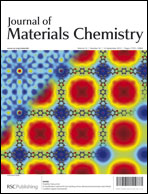It is believed that a TiN coating can increase the electrical conductivity, and consequently the performance, of an electrode. In this work, a simple one-step synthesis of nitrogen- and TiN-modified Li4Ti5O12, i.e. solid-state reaction of Li2CO3 and TiO2 anatase in an ammonia-containing atmosphere, is introduced. The reducing ammonia atmosphere could cause the partial reduction of Ti4+ to Ti3+ and the doping of nitrogen into the Li4Ti5O12 lattice, in addition to the formation of the TiN phase. By controlling the ammonia concentration of the atmosphere and using a slight Ti excess in the reactants, Li4Ti5O12, nitrogen-doped Li4Ti5O12, or TiN-coated nitrogen-doped Li4Ti5O12 were obtained. Both the electrical conductivity and the TiN thickness were closely related to the ammonia concentration in the atmosphere. Synthesis under reducing atmosphere also resulted in powders with a different plate shape particulate morphology from that synthesized in air, and such plate-shape powders had an ultrahigh tap density of ∼1.9 g cm−3. Interestingly, the formation of TiN was not beneficial for capacity improvement due to its insulation towards lithium ions, unlike the nitrogen doping. The sample prepared under 3% NH3–N2, which was free of TiN coating, showed the best electrode performance with a capacity of 103 mA h g−1 even at 20 C with only 3% capacity decay after cycling 100 times.

You have access to this article
 Please wait while we load your content...
Something went wrong. Try again?
Please wait while we load your content...
Something went wrong. Try again?


 Please wait while we load your content...
Please wait while we load your content...